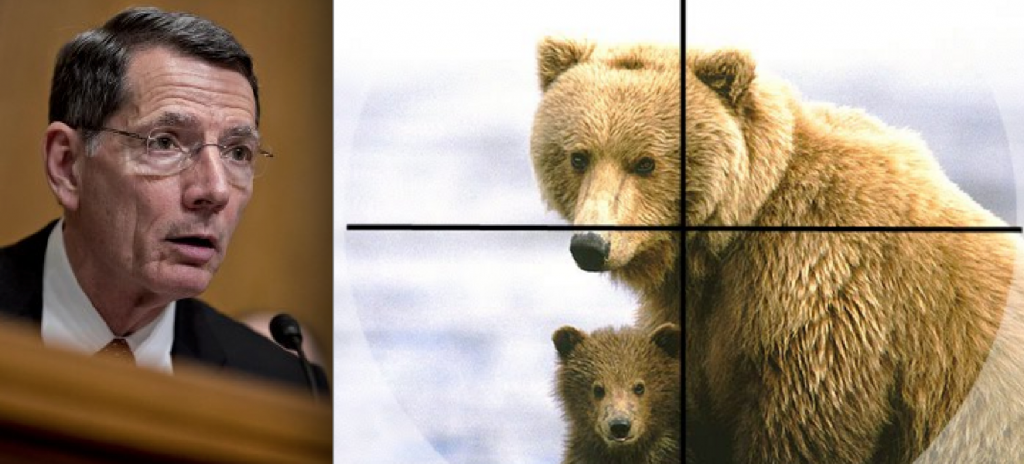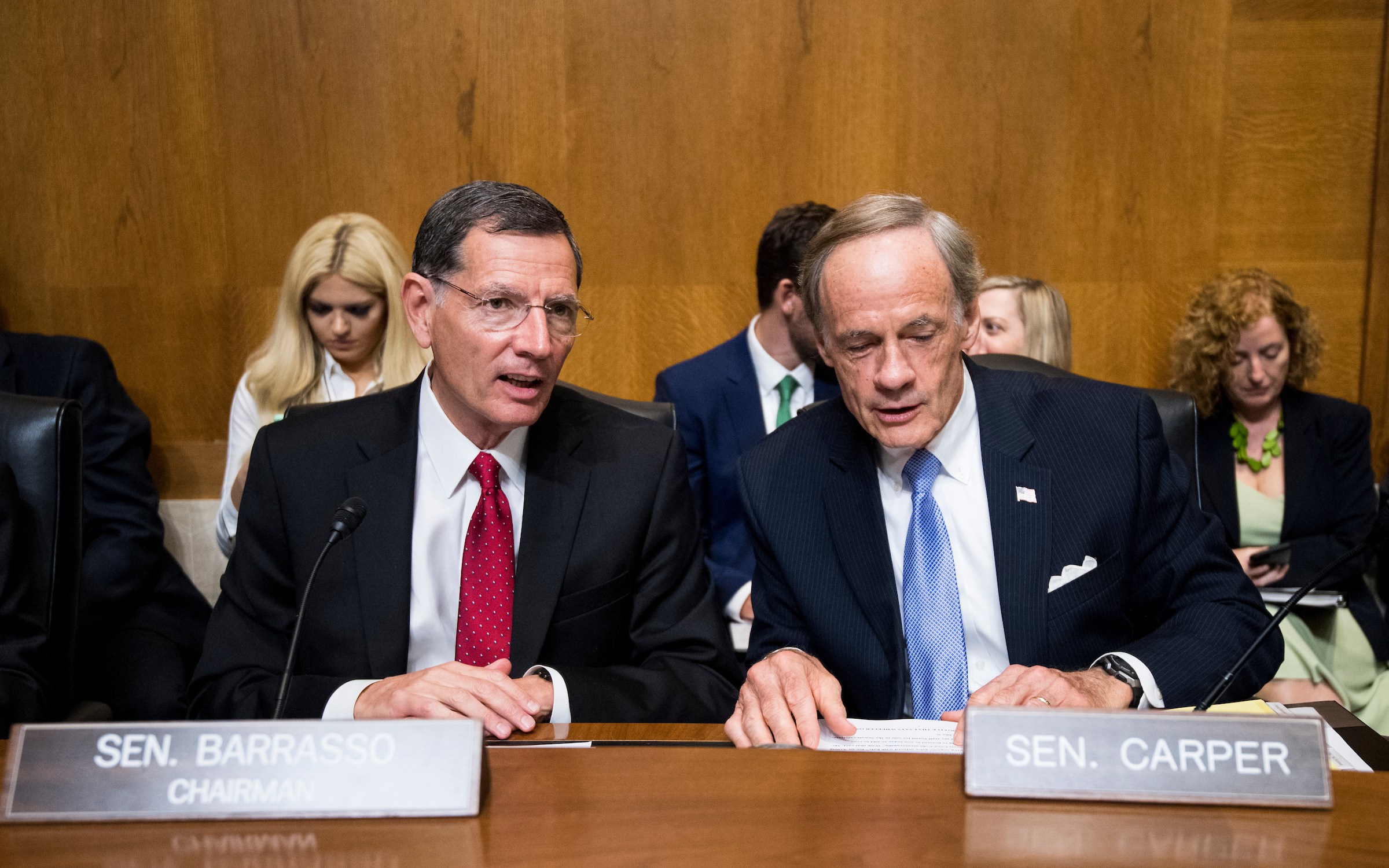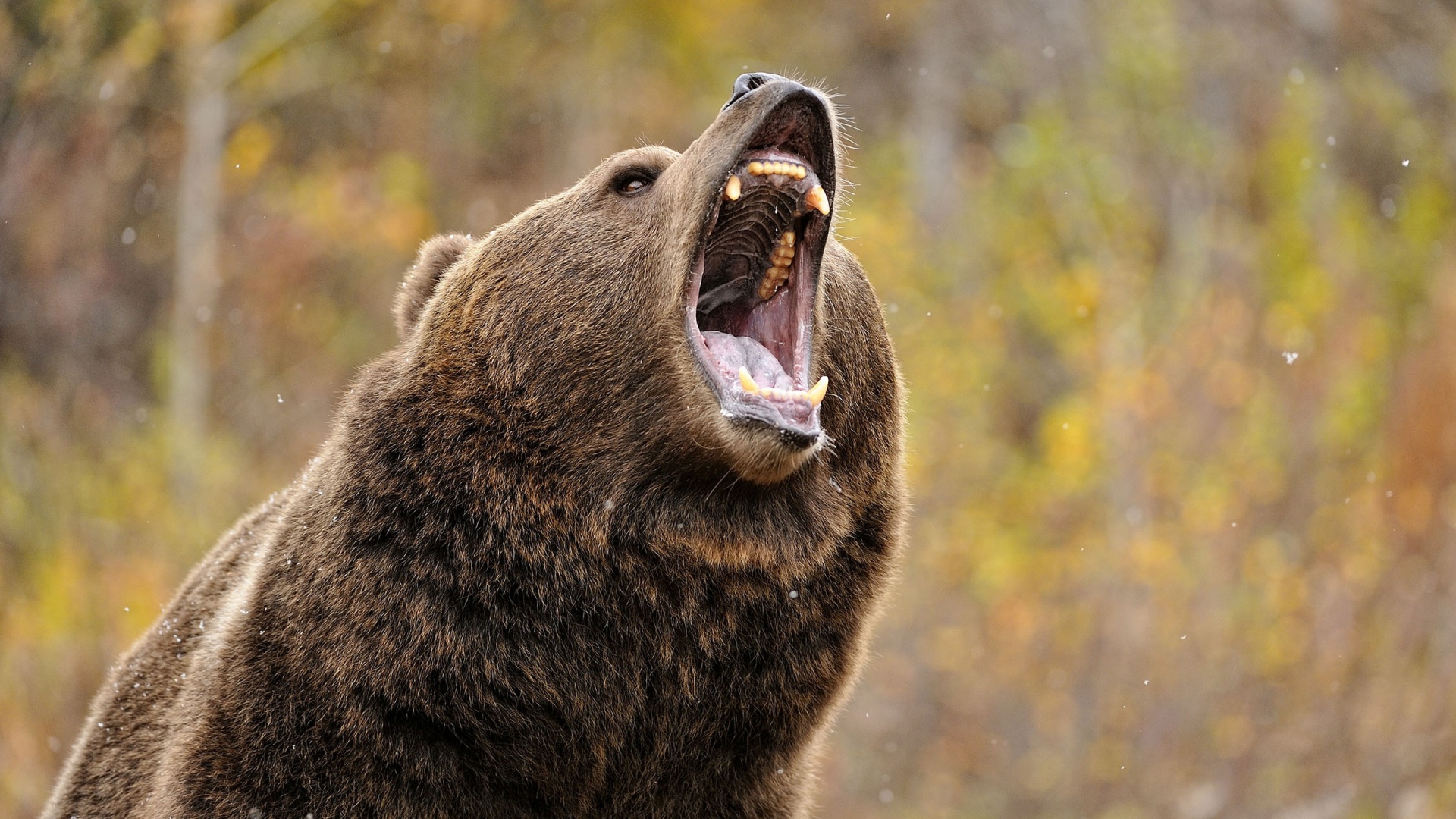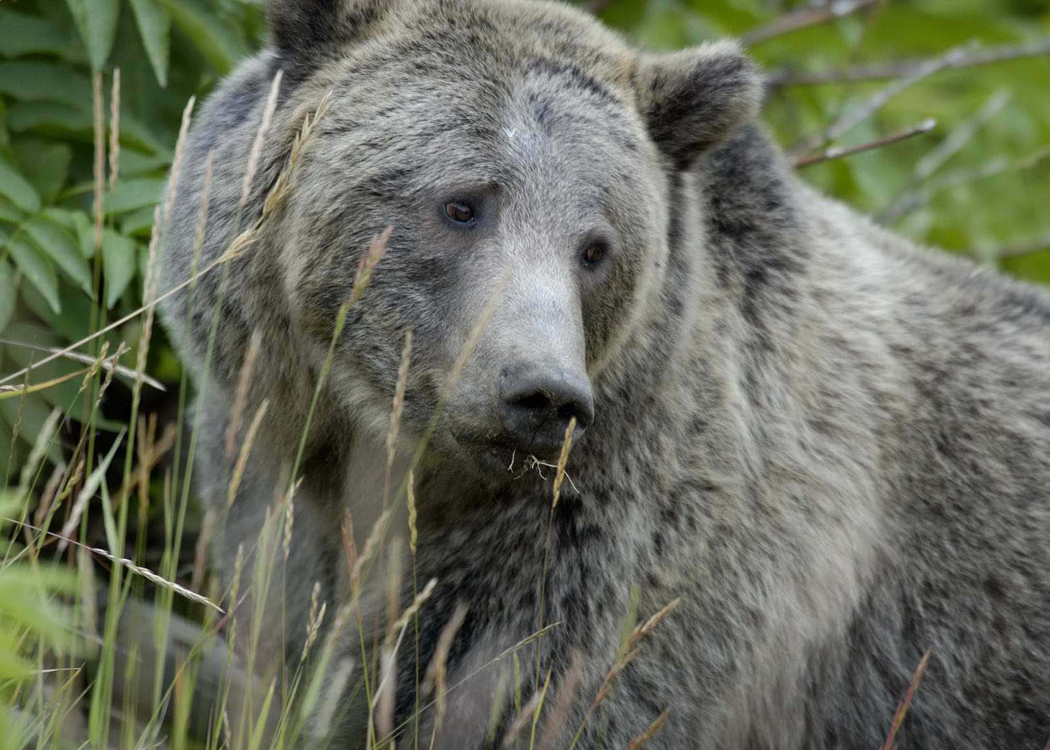GOP Senators Trying to Strip Yellowstone Grizzly of Endangered Status While Killing Your Right to Sue

(EnviroNews Nature) — Washington D.C. — On Sep. 9, 2020, Senator John Barrasso (R-WY), Chair of the Senate Committee on Environment and Public Works (EPW), held a hearing called: Successful State Stewardship: A Legislative Hearing to Examine S.614, the Grizzly Bear State Management Act (GBSMA). S.614 was introduced to the Senate in 2019 to address the subject of the Greater Yellowstone Ecosystem (GYE) grizzly bear’s Endangered Species Act (ESA/the Act) listing.
Barrasso has come under heavy fire in the past by Democrats and environmental groups, and they accuse him for meddling with the ESA and voting against endangered animals. Those same conservation groups say it’s no different this go-round. The GBSMA, designated Senate Bill 614 (S.614), would remove the “threatened” status from the bears in the GYE and would “[direct] the Secretary of the Interior to reissue the final rule delisting the grizzly bear that was published on June 30, 2017.”
Following the publishing of that rule, the Crow Indian Tribe sued the United States. The United States District Court for the District of Montana, Missoula Division, ruled against the USFWS in 2018 and required the agency to fix problems with its decision. This ruling vacated USFWS’ final rule, making it null and void until the agency could do the studies necessary to prove the grizzly bear should be delisted.
In 2020, the United States Court of Appeals for the Ninth Circuit upheld the ruling of the lower court and said the agency needed to consider “several issues concerning a 2017 rule governing the Greater Yellowstone grizzly bear population, with the exception of the district court’s order requiring the [USFWS] to conduct a ‘comprehensive review’ of the remnant grizzly population.”
But S.614 would take things a step further. The bill, in addition to stripping GYE grizzlies off the endangered list, would also protect the reissuance of the rule from judicial review, which would eliminate the option for anyone to file a lawsuit against the delisting and would override the court’s ruling that requires better due diligence from the agency.
Aside from the survival of GYE grizzlies (Ursus arctos horribilis), at issue are livestock loss, state economic costs, human-bear conflicts, and how decisions for delisting a species can be challenged through the judicial process.
“The grizzly bear in the Greater Yellowstone Ecosystem is fully recovered – end of story,” Barrasso, co-sponsor of the bill told the committee in his opening remarks. “President Bush, President Obama, and President Trump agree. Under each of their administrations the U.S. Fish and Wildlife Service determined that the grizzly bear is fully recovered and should be delisted.”
The Removal of Judicial Review and What That Could Mean
The committee called on three people to testify. Two of the three were in favor of delisting the grizzly and one said he was neutral on the subject. Ranking Member Senator Tom Carper (D-DE) focused on the bill’s judicial portion.
“Judicial review of agency decisions is central to ensuring that the Endangered Species Act is guided by science and informed by public input,” said Carper during the EPW hearing. “Judicial review can also help ensure the federal government takes future impacts to species into account and [that] it has done just that in the case of the grizzly bear.”

Witness Patrick Crank, Vice President of the Wyoming Game and Fish Commission, who incorrectly asserted there were now 1,000 bears in the GYE during his testimony (the USFWS puts the number at 728 down from 757 in 2014), accused “environmental groups” of shopping their case around to find the most favorable judicial district for their cause.
Stephanie Kurose, Senior Endangered Species Policy Specialist for the Center for Biological Diversity, had a different view and wrote this in an email to EnviroNews:
For decades, multiple courts have repeatedly slammed the Service for prematurely removing federal protections for GYE grizzly bears. If the Service had simply followed the clear mandates of the Endangered Species Act, and the instructions set forth in these decisions by considering the impacts of delisting on the remnant population of bears, the agency could move forward with delisting the GYE grizzly bears in a manner that is consistent with Congress’ clear intent in passing the Act. But this means the Service must consider and address the impacts of delisting on grizzly bears elsewhere in the lower 48 states.
Witness John D. Leshy, distinguished Professor Emeritus, University of California, told the committee he was neither for nor against delisting the GYE grizzly. Instead, he brought the focus back to the judicial portion and said it wasn’t Congress’ job to stop the judicial process or even interfere.
“Given the importance that Congress has attached to judicial review, it seems to me that rarely, if ever, is there justification for doing away with it as S.614 proposes to do. Short circuiting judicial review can have real costs,” testified Leshy. In his written testimony, he cited the Exxon Valdez oil spill as an example where Congress overrode a judicial decision that resulted in dire consequences.
Kurose shared a similar assessment and continued in her email interview with EnviroNews:
This is perhaps the most disturbing part of the bill. Restricting access to the courts undermines the ability of ordinary Americans to hold federal agencies accountable to the law whenever they abuse their authority or overstep the clear limits that Congress has placed upon them. Restricting judicial review is inherently undemocratic and sets a dangerous precedent regarding access to the courts.
This isn’t the first time Congress has sidestepped judicial review in a wildlife bill, though it is extremely rare. In 2009, the USFWS delisted the gray wolves (Canis lupus) in the Rocky Mountains, except in Wyoming. The District Court of Montana ruled the agency couldn’t create a subspecies and delist it in an attempt to get past the requirements of delisting a species as a whole.
In 2011, Congress attached a rider to the budget reaffirming the USFWS’ 2009 gray wolf delisting and exempted the agency’s ruling, in that specific case, from judicial review. The budget, and thus the rider, was signed into law. This was the first time Congress had ever delisted a species according to Earthjustice. The Ninth Circuit Court later affirmed Congressional power to protect an agency ruling from judicial review.
IS THE GYE GRIZZLY POPULATION GENETICALLY STABLE FOR THE LONG-HAUL?
Leshy said the USFWS could fix the three problems the Ninth Circuit Court of Appeals identified in its delisting decision. Because the grizzly has been so well studied, he said it shouldn’t be difficult for the USFWS to determine if delisting the GYE grizzly bear would lead to a “sufficiently distinct and protectable remnant population,” also noting that the agency seemed to concur with that assessment previously.
Many biologists believe that genetic stability can only be achieved through the linking of currently isolated grizzly populations in Montana, Idaho, Wyoming, and Washington. That would be impossible, they say, without federal safeguards and oversight.
The court agreed with those researchers and identified lack of genetic diversity as a second shortcoming in the USFWS’ move to delist the bears. The agency would need to have “concrete, enforceable mechanisms” in place to ensure the long-term genetic health of the GYE population.

According to Leshy, the question of genetics came up in 2007, so the USFWS should have already considered plans to improve the bear’s genetic health. Crank and the third witness Chuck Roady both agreed with Leshy about the ability of the USFWS to easily fix the first two issues: whether or not the grizzly population is sufficiently distinct and what the agency would do to ensure the population’s long-term genetic health. Roady is Vice President and General Manager of F.H. Stoltze Land & Lumber Company and a member of Montana’s Grizzly Bear Advisory Council (GBAC).
Lastly, the USFWS would need to revisit and recalibrate its conservation strategy based on the latest estimates of the actual number of bears in the GYE. Originally, the USFWS had this in their plan but dropped it after pressure from the states affected by the rule.
“The issue of recalibration cannot be solved quickly or easily and it’s a direct intrusion into state management authority and it’s inconsistent with the Endangered Species Act itself,” said Crank.
In response to the Ninth Circuit Court ruling and the ongoing legal battle, Senator Steve Daines (R-MT), co-sponsor of the GBSMA stated, “Wildlife management should be determined by science, not a court order.”
DEMS AND CONSERVATIONISTS FEAR RED STATE WILDLIFE MANAGEMENT
Carper did have other concerns, especially regarding the states’ ability to enact proper management of a predatory wildlife species based on past history.
“The Endangered Species Act protections are only required when state management to protect and recover imperiled species has failed,” said Carper. Many stakeholders have told Carper they have “ongoing concerns” about the ability of the grizzly bears to thrive under some state management plans.
Carper wasn’t the only one with concerns about the states’ ability to manage the bear population. Nick Gevock, Conservation Director for the Montana Wildlife Federation and a member of GBAC, expressed his concern for state conservation plans too.
“The top-down approach of this bill ignores the fact that the states gutted their conservation plans as the delisting was moving ahead in 2016, and they were told those plans weren’t sound scientifically or legally,” said Gevock, as reported by the Bozeman Daily Chronicle. The GBAC released its plan for grizzly management in Montana on Sep. 10, 2020.
On the heels of the 2017 USFWS decision to delist the GYE grizzlies, Wyoming opened up its first grizzly bear hunting season in 44 years in 2018. Hunters were to be placed in a lottery and allowed to kill 22 bears. That same year Idaho proposed allowing hunters to take a grand total of one bear. Both hunts were stopped by a federal court order, but critics argue the immediate opening of those hunts exposes a bloodthirsty mentality against apex predators, lodged and embedded in red state wildlife management agencies.
HUMAN-BEAR CONFLICTS: ARE THEY EVEN A REAL CONCERN?
While some at the senate hearing said more grizzlies in the area meant more human-bear conflicts, including Barrasso, that may not be the case. Wyoming Public Media reported there wasn’t a single injury attributed to human-bear conflicts in the GYE in 2019. This year, as of July 24, 2020, a record eight people have been injured in the GYE by grizzly bears. On average, grizzlies injure one person during the first six months of a typical year, according to Jackson Hole News and Guide.

Scientists attribute the recent conflicts to more people being in more outdoor places because of the COVID-19 pandemic and those people being ignorant about safety precautions to guard against bear encounters. Roady believes part of the solution lies with whoever manages the population.

“I am not naïve enough for a second to believe if we delist the grizzly bear that these interactions will be alleviated, but I do believe that if the bear is delisted and actively managed by the states that the number and frequency of these incidents could be greatly reduced,” testified Roady. “Implementing a more hands-on management by state predator managers while allowing a regulated hunting season will most certainly help mitigate and provide more opportunities to avoid many of these conflicts.”
SENATOR JOHN BARRASSO AT IT AGAIN
Barrasso’s voting against endangered species is well documented. Since President Trump took office, Barrasso has wielded his EPW power in several attempts to weaken the ESA. Veiling his actions in language like “modernizing,” the EPW has worked to introduce economics into an Act — an overwhelming popular piece of bedrock legislation that was originally written to consider only the latest science when classifying an animal as endangered.
And the senator from Wyoming hasn’t just attacked bears with his bills. On five separate occasions, he has sponsored or co-sponsored legislation to delist gray wolves by separating them into subspecies. In January 2017, S.164 was written to delist gray wolves of the Great Lakes and Wyoming and preempt judicial review. It didn’t receive a vote.
In July 2017, during the same session of Congress as S.164, Barrasso introduced S.1514 with the same intent. It met with the same fate and didn’t receive a vote, according to Govtrack. The Senator’s long-running vendetta against wolves, specifically of these regions, can be seen in 2016’s rider to S.659 (14) and 2015’s S.2281. Neither of these attempts saw a vote either. Still, these failures haven’t altered the Senator’s actions as he repeatedly brings legislation to Senate committees in an attempt at finding a Congress favorable to his cause.
“The hearing record [for S.614] will remain open for several more weeks as senators have the opportunity to ask written questions and receive written responses from today’s witnesses,” said Mike Danylak, a spokesman for the EPW, as reported in the Powell Tribune. “After those responses are complete, the committee will review them before taking action on the bill.”
RECENT AND RELATED FROM ENVIRONEWS
Trump Admin Defining the Word ‘Habitat’ in Sneaky New Effort to Trash Endangered Species Act
(EnviroNews DC News Bureau) – In what prominent conservation group WildEarth Guardians (Guardians) is calling “death by a thousand cuts,” the Trump Administration is at it again, with another proposed change that would weaken the overwhelmingly popular Endangered Species Act (ESA/the Act). This go-round features an attempt to…
Trump’s New Endangered Species Rule Will ‘Turn over the Critical Habitat Designation Process to Industry’
(EnviroNews DC News Bureau) – Washington D.C. – The Endangered Species Act (ESA/the Act), in its original form, required listing decisions to be made based on science and trade data without any other considerations given for any reason. But a Trump Administration rollback in 2017 and finalized on…
OTHER REPORTS FROM ENVIRONEWS ON GRIZZLY BEARS AND THE ENDANGERED SPECIES ACT
Feds Attempting to Strip Yellowstone Grizzly Bear of Endangered Species Act Protection
(EnviroNews Wyoming) – Missoula, Montana – In a move that has angered environmentalists and wildlife enthusiasts, the U.S. Fish and Wildlife Service (USFWS) proposed on March 3, 2016, to strip the iconic Greater Yellowstone Ecosystem (GYE) grizzly bear of its protected status under the Endangered Species Act (ESA),…
Trump Admin Stripping Yellowstone Grizzly of ‘Endangered’ Protection, Opening Door for Hunting
(EnviroNews Nature) – Washington D.C. – The U.S. Fish and Wildlife Service (USFWS) announced June 22, 2017, that it has finalized its plan to rescind Endangered Species Act (ESA) protection for the Greater Yellowstone Ecosystem (GYE) grizzly bear (Ursus arctos horribilis), and turn management of the iconic creature…
Senate Hearing: Green Groups Say Committee Moving to Gut the Endangered Species Act
(EnviroNews Nature) – On May 10, 2017, Senator John Barrasso (R-WY), Chairman of the Senate Committee on Environment and Public Works (EPW), led a committee oversight hearing called, “Conservation, Consultation and Capacity: State Views on the Need to Modernize the Endangered Species Act.” Green groups decry Barrasso’s desire…
Breaking: WildEarth Guardians Sues Trump Admin for Stripping Yellowstone Grizzly of Endangered Status
(EnviroNews Nature) – On August 30, 2017, WildEarth Guardians (Guardians), a nonprofit environmental group legendary for suing the federal government on wildlife issues, sued the Trump Administration – this time for stripping the iconic Greater Yellowstone Ecosystem (GYE) grizzly bear (Ursus arctos horribilis) of its endangered species status…
Idaho to Open Grizzly Hunting Season So Yokels Can Kill One Male Bear in Name of ‘Management’
(EnviroNews Idaho) – Boise, Idaho – On March 22, 2018, Idaho’s Fish and Game Commission voted unanimously to direct the Department of Fish and Game (IDFG) to collect comments on a proposed grizzly bear hunting season. Idaho would allow all hunters together to shoot a grand total of…
No Fairytale Ending for Yellowstone and the Three Bears After Park Shuns Thousands of Comments
(EnviroNews Wyoming) – Yellowstone National Park – It was a sobering outcome for social media activists who had been clamoring to #SpareTheBear. Despite the tumult on Twitter and fury on Facebook, Yellowstone Park managers were undeterred. The park announced from the beginning, it would euthanize the mama grizzly…
Republicans Lick Chops While Revving Up To Dismantle The Endangered Species Act
(EnviroNews Nature) – Washington D.C. – On Feb. 15, 2017, the U.S. Senate Environment and Public Works Committee (EPW) held a hearing called, “Oversight: Modernization of the Endangered Species Act.” Sen. John Barrasso (R-WY), Chairman of the EPW, held this two-hour hearing to explore “the need to modernize…
It’s Done: Trump Signs HJR 69 into Law Allowing Slaughter of Alaskan Bear Cubs, Wolf Pups
(EnviroNews Alaska) – Washington D.C. – On April 3, 2017, President Donald Trump signed House Joint Resolution 69 (HJR 69) into law. The legislation rescinds the U.S. Fish and Wildlife Service’s (USFWS) 2016 Alaska National Wildlife Refuges Rule (Refuge Rule). The Refuge Rule was enacted to protect native…
Center for Biological Diversity Sues Trump for Signing HJR 69 Allowing Slaughter of Bear Cubs, Wolf Pups
(EnviroNews USA Headline News) – Washington D.C. – The Center for Biological Diversity (the Center) filed a lawsuit in federal district court in Anchorage, Alaska, on April 20, 2017, against the U.S. Department of Interior (Interior) and Secretary Ryan Zinke, after President Donald Trump signed House Joint Resolution…
Bill Allowing Slaughter of Alaskan Bear Cubs, Wolf Pups, Sails Through Senate to Trump’s Desk
(EnviroNews Alaska) – Washington D.C. – On March 21, 2017, in a 52-47 vote, the Senate passed House Joint Resolution 69 (HJR 69), a Congressional Review Act resolution to rescind the U.S. Fish and Wildlife Service’s (USFWS) Alaska National Wildlife Refuges Rule (Refuge Rule), which has been in…
FILM AND ARTICLE CREDITS
- Shad Engkilterra - Journalist, Author



![Leading the Charge for America’s Wild Horses on Capitol Hill: NBA/NFL Celeb. Bonnie-Jill Laflin: ‘[Politics] won’t stop us from fighting’](https://cf-images.us-east-1.prod.boltdns.net/v1/static/1927032138001/f46b2158-cead-47f0-ab44-4b027059411a/4e4afcf2-937d-4a9d-acba-1b82e2efd4c6/160x90/match/image.jpg)


